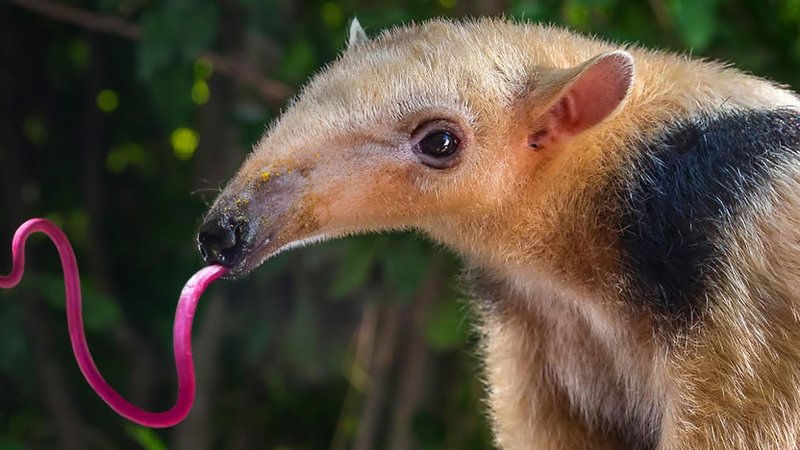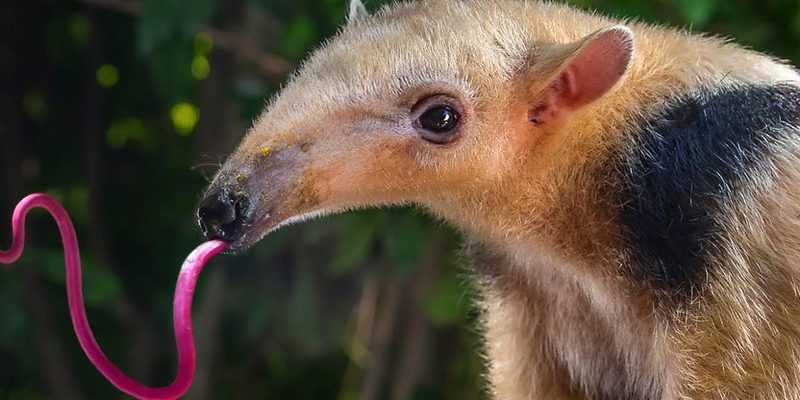
When it comes to understanding an anteater’s intelligence, we need to look beyond simple behaviors. It’s about the *how* and the *why* behind their actions. So, let’s explore the cognitive world of anteaters, discussing their behavior, instincts, and some surprising truths about how they navigate their habitat.
What Do We Mean by “Intelligence”?
Before we jump into thinking about anteater smarts, let’s clarify what we really mean by “intelligence.” For many species, intelligence involves problem-solving, social interaction, and learning from experiences. In the animal kingdom, this can look different from what we humans consider clever.
Anteaters may not solve puzzles like a dolphin or use tools like a crow, but they have adapted beautifully to their niche. Their intelligence lies in their unique adaptations and behaviors that help them survive in the wild. They rely heavily on instinct rather than learned behaviors, and that’s a critical aspect to consider when evaluating how smart they are.
For example, when it comes to finding food, anteaters use their excellent sense of smell to locate ant hills. Their long, strong tongues—up to 16 inches long!—are perfect for extracting ants and termites from their hiding spots. This ability to find and consume food efficiently demonstrates a form of cognitive adaptation suited to their specific environment.
How Do Anteaters Interact with Their Environment?
Anteaters mainly inhabit grasslands and forests, particularly in Central and South America. Their interaction with their surroundings is shaped by their diet of ants and termites, which has quite an impact on their cognitive abilities. You might find it surprising how specialized they are!
One of the most fascinating behaviors is their foraging technique. Anteaters will use their sharp claws to break open mounds and logs where ants and termites reside. They’re not just digging randomly; they remember where they’ve foraged before and when to return for more food. Honestly, that’s a pretty clever strategy for ensuring they have enough to eat.
Another interesting aspect of anteater behavior is their solitary nature. These animals are typically loners, which means they’ve developed a set of skills that allow them to succeed on their own. For instance, they have a keen ability to recognize scents in their environment, which aids in both finding food and avoiding predators. This acute sense of smell reflects a different kind of intelligence, crucial for survival.
Social Behavior and Communication
You might be wondering how anteaters communicate if they’re mostly solitary. Well, they do have a few social behaviors, although they’re subtle. Anteaters mainly communicate through scents. They use their sense of smell to find mates and identify territory, which can be seen as a form of intelligence.
During mating season, males will follow the scent trails left by females to locate them. This reliance on scent showcases their ability to gather information from their surroundings, a vital skill for reproduction. However, aside from breeding, anteaters do not engage in extensive social interactions.
Interestingly, when anteaters do encounter each other, there are some displays of dominance or submission. For example, they might engage in aggressive postures or vocalizations, like grunts and snorts. This behavior indicates that anteaters are aware of social hierarchies, which adds another layer to their understanding of social dynamics, even if they prefer to be alone.
The Role of Memory in Anteater Behavior
Memory plays a significant role in how anteaters function day-to-day. Since they have clear patterns in their feeding habits and territory exploration, their ability to remember locations of ant hills and food sources is key.
Imagine having a favorite restaurant—you wouldn’t want to forget where it is, right? Similarly, anteaters remember where they’ve previously found food, which minimizes the time spent searching for snacks. This ability to create mental maps of their environment demonstrates a basic level of cognitive processing.
Furthermore, anteaters can adapt their foraging routes based on availability. If a previously rich ant mound has been depleted, they’ll learn to alter their paths over time. This flexibility is often a sign of intelligence, showcasing their ability to learn from experience.
Comparing Anteater Intelligence with Other Animals
When we talk about animal intelligence, it’s easy to fall into the trap of comparison. So how do anteaters stack up against other animals? Unlike dolphins or elephants, which are often hailed for their problem-solving skills and social structures, anteaters exhibit intelligence in very different ways.
For instance, compared to rodents or other mammals like raccoons, anteaters might not be as quick to adapt to new situations. However, their specialized skills in finding food and navigating their environment highlight an intelligence that is well-suited for their lifestyle.
Another point of comparison is their lack of need for complex social interactions. Animals like wolves thrive on teamwork, but anteaters manage to survive on their own with their unique adaptations. This solitary behavior is impressive in its own right, showing that intelligence isn’t just about how many friends you have or how social you are.
So, how smart is an anteater? While they might not be doing any math problems or crafting tools, anteaters have a type of intelligence that’s perfectly adapted to their needs. Their ability to find food, remember locations, and navigate a solitary existence showcases a different side of intelligence.
As we explore the animal kingdom, it’s important to appreciate the unique strengths of each species. Anteaters might not fit our typical mold for “smart” animals, but they are incredible creatures with fascinating behaviors. Next time you see one, you might just think a little deeper about how they navigate life in their special way.

